Media Wall Showcase 4X 4WALLS
4X 4WALLS is the fourth 4WALLS showcase projected across the Media Wall at the Asia Culture Center (ACC) in Gwangju and COEX K-POP Square Media in Samseong-dong, Seoul. 4X 4WALLS goes to COEX and explores, expands, and exploits public art. (Explore, expand, exploit, and COEX)
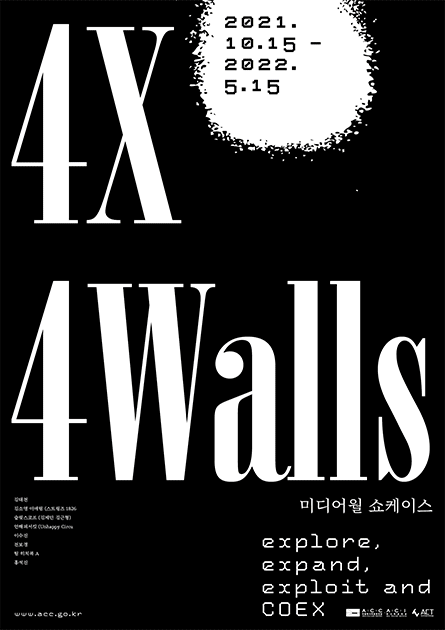
- Date(ACC Media Wall)
October 15, 2021 – May 15, 2022 (Friday–Sunday)
(COEX K-POP Square Media)
October 16, 2021 – November 12, 2021 (Saturday–Friday) - Time(ACC Media Wall) 19:00–22:00
(COEX K-POP Square Media)
Four times a day (18:30, 19:30, 20:30, 21:30)
*Refer to the showtime for each work - PlaceACC Media Wall (Gwangju), COEX K-POP Square Media (Seoul)
- Age LimitOpen to all ages
- Price Free of charge
- TicketFree admission
- Contact+82-1899-5566
cinemafund@aci-k.k
Introduction
The ACC Media Wall is behind the former Jeollanam-do Provincial Office building in Gwangju. It is a large screen measuring 75 m × 16 m, which people can enjoy while walking through the Asia Culture Plaza and Forest of Light.
The outer media wall of the COEX Atrium building is a large electronic billboard in K-POP Square, adjacent to the Samsung Station, Starfield COEX Mall, COEX Atrium, and Hyundai Department Store Trade Center, where an average of 5 million people pass by each month. Using anamorphic techniques, it displayed the work “WAVE,” piquing global interest. Anamorphic means “a distorted image,” and it is an expression technique that uses optical illusions to create a three-dimensional effect. The COEX K-POP Square Media generates realistic content by creating a virtual space in two flat-panel displays.
In this exhibition, excellent works by eight artists across multiple genres, generations, genders, and regions were selected through the 2021 Cinema Fund Media Wall Content Contest and exhibited.
| No. | Exhibition period | Name of artist | Title of work |
|---|---|---|---|
| 1 | October 15 – November 14, 2021 | Kim Dae-cheon | Symbiotic do-si |
| 2 | November 15 – December 14, 2021 | Kim So-young, Lee Ae-rim | Ana Inn: Harvesting Light |
| 3 | Slitscope (Kim Je-min, Kim Geun-hyung) | Ludenstopia | |
| 4 | December 15, 2021 – January 14, 2022 | Unhappy Circuit | Interstellar Message written in 6 languages of the Earth |
| 5 | January 15 – February 14, 2022 | Lee Su-jin | How to make a Song with Opposite Value? |
| 6 | February 15 – March 14, 2022 | Jeon Bo-gyung | Machine Learning |
| 7 | March 15 – April 14, 2022 | Team Hitchcock A | Requiem aeternam dona eis: Everything will be OK |
| 8 | April 15 – May 15, 2022 | Hong Seok-jin | Scene of Corrosion |
※ Artist talk expected during the given period
| No. | Name of artist | Title of work | Exhibition period | Time |
|---|---|---|---|---|
| 1 | Streams 1826 (Kim So-young, Lee Ae-rim) | Ana Inn: Harvesting Light | October 16–22 / October 30 – November 15 | (Four times a day) 18:30, 19:30, 20:30, 21:30 |
| 2 | Slitscope (Kim Je-min, Kim Geun-hyung) | Ludenstopia | October 23–29 / November 6 – November 12 |
Program
The cities along the Mekong River need to adapt to nature’s whims, which behaves capriciously against civilizations living in barren grounds. The civilizations might have wanted to settle in one place for a long time; however, natural disasters prevent the stubbornness of the civilizations. For them, nature is not something to conquer and grow with.
However, traces of the old symbiotic city can’t be seen on today’s maps. In contemporary and modern maps of Asia, hints of a more stubborn civilization remain. Can urban technology overpowering nature eliminate the anxiety caused by untamed natural disasters and bring lasting well-being to humankind?
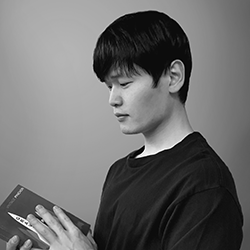
- 2021House Ghosts: 1958-1983-2002, Seoul Museum of Art, Seosomun Main Building, Seoul (four channels, 4 min, 3D computer graphic animation), Climate Museum: Life and Death of Our Home, Kim Dae-cheon and Kang Ran-hyung (research, advice)
- 2021Disaster's echo, Insa-dong Kote, (Slow Futures Lab Workshop, instructor), 2022 Exhibited in the Korean Pavilion at the “17th International Architecture Exhibition of La Biennale di Venezia,” Slowfutureslab
- 2020corpus|Body composed of words, supported online media artistic activities at Seoul Foundation for Arts and Culture (three channels, 10 min, images, graphic synthesis)
- 2020Breathing of a Forest, Seoul National University Hospital LG Multi-Cinema Wall, Seoul (one channel, 2 min loop, 3D computer graphic animation)
- 2019Body Universe, Seoullo Media Canvas, Seoul (one channel, 3 min, 3D computer graphic animation)
In Chapter One, “Quantum Gaya,” the revolutionist Kim Alexandra and the ancient Gaya girl, Songhyun, appear. Songhyun was buried alive 1,500 years ago. She returns to the museum through the restoration of her remains, and Ana does Light Harvesting on the relics of Songhyun and the Gaya tombs. Songhyun appears again, and her remains are reborn as new materials in Ana Inn and the universe (reanimation).
a. Amor Amur
Portal Ana is an inn on the banks of the Heilong River (Amur), where Asia and Europe meet. It is called Amur River in Russian and Haramuren (Black River) in the Mongolian and Tungus languages. Portal Ana, a self-transforming house, is located on the edge of a river deep in the forest. It is a self-transforming house. This is where quantum coherence and superposition best occur and Light Harvesting takes place. Green plants and bacteria in the forest surrounding Ana Inn convert sunlight into chemical energy, and this is the place where the Lighting Harvesting efficiency is maximized. Seen from the universe, this is one of the regions that emit the most photosynthetic light on the Earth’s surface. The forest is the harvest field of light. Although there is not a lot of light in this area, certain plants and bacteria in this forest still photosynthesize.
b. Portal
The gates at Ana Inn are technical and magical gates connecting different locations. These are places of “absolute void and mysterious beings” (a phenomenon of temporary unity without an immutable substance). The four gates are painted with a fish-like dragon, bison, white wolf, and goat, and are portals that open in all directions that are made in heaven and can open on the Earth. Reflecting the sky, the gates open the land during the changing seasons. Ana Inn is a place to remember the dead and the point in the cosmos that connects the world and the universe. Ana Inn’s visitors spontaneously visit; they are dead but not dead and inhale the blood of the living, humans of this world, or aliens who migrated to Earth at some point. Kim Alexandra reveals Gaya history’s dark and unique sides, when people buried women and animals alive, just like the Songhyun’s helpers. The reservoirs and tombs of Gaya in Changnyeong, Songhyun’s burial site, are connected to and entangled with Ana Inn.
C. Image synthesis
Ana, the innkeeper, takes pictures and works with images. In Ana Inn, a photosynthesis zone on the Earth’s surface, she synthesizes all kinds of photo, audio, and visual ecosystems. Calling herself a Light Harvester, Ana’s camera and waveform box device captures every nook and cranny with a long exposure, like Niepce or Daguerreotype landscape photos. Leaves sprout from the auxiliary devices. Time accumulates in places and people, and animals that intertwine and overlap embrace the light.
Sometimes in Ana Inn, Light Harvesting is done to people who died without being buried. The hair and nails of a boy miner, who died in a tunnel after being forcefully drafted in Sakhalin, are cut off by his friend before he is cremated. Photos of the Goryeo people, who were buried in Ushtobe after forced migration, are harvested to create images, sounds, and dynamics (kinetics) with light to represent memories, places, and substances. As a result, Harvesting Light: The Graves of Diaspora (Seoul Museum of Art, 2021) was created first in collaboration with the artist Lee Ae-rim. In Ana Inn: Harvesting Light, the lights of Songhyun and her biological death and social burial are harvested.
“Songhyun was buried alive in Bisabeol (now Changnyeong, Gyeongnam) 1,500 years ago, at the age of 16, and she was given the name “Songhyun” because she was discovered in an ancient tomb (Historic Site No. 81) in Songhyun-ri, Changnyeong-eup, Changnyeong-gun, Gyeongsangnam-do in December 2007.”
Songhyun visits Ana Inn carrying the relics of an ancient country on the horses she was buried alive with.
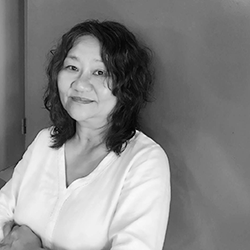
Exhibition/Screening
- Harvesting Light: The Graves of Diaspora, 2021, exhibition screening, “Naming the Nameless,” Seoul Museum of Art, SeMA Bunker 2021. Produced by Kim So-young
- Kim Alex’s Place: Ansan-Tashkent, 2014, exhibition screening, “Naming the Nameless,” Seoul Museum of Art, SeMABunker 2021.
- Goodbye My Love, North Korea, “Unflattening,” National Museum of Modern and Contemporary Art
- SFdrome: JU Sejuk, “The Arrival of New Women,” National Museum of Modern and Contemporary Art, Buenos Aires Biennale, Seoul International Women’s Film Festival, Purplay screening, iGong International Media Festival
- Sound of Nomad: Koryo Arirang, Urban Ritornello: The Archives on Community exhibition 2017, Ilmin Museum of Art, joint exhibition of Parasite in Hong Kong, exhibition at Anlen Museum of Art, China
- Heart Of Snow: Afterlife, exhibition and collection at the National Museum of Modern and Contemporary Art, 2016
- Strangers in Open City, “Total Recall,” Ilmin Museum of Art, 2014
Film
- “Goodbye My Love, North Korea,” released in Korea, released nationwide in art theaters in Tokyo, Osaka, Kyoto, and Okinawa, Japan (2020), screened at the Busan International Film Festival, Montreal Independent Film Festival, Seoul Independent Film Festival, iGong, etc. (2018–2019)
- Sound of Nomad: Koryo Arirang, Seoul International Women’s Film Festival, Taiwan Ethnography Film Festival Opening Film, 2021
- Women’s History Trilogy, Hong Kong, Melbourne International Film Festival, Pesaro, Yamagata International Documentary Film Festival, Harvard University, Chicago University
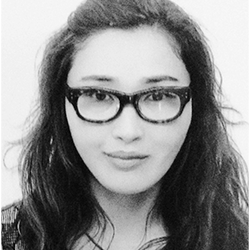
- 1992: short cartoon Billy’s Booger
- 2005: Film Leader at the 6th Jeonju International Film Festival
- 2005: Film Leader at the 7th Seoul International Women’s Film Festival
- 2005: Film Leader at the 6th Jeonju International Film Festival, Film Leader at the 7th Seoul International Women’s Film Festival
The game is finding a space in space and creating an overturn and liberation of the same space.
“Then, what is Ludenstopia if imagined by artificial intelligence?”
Space is the most isolated element of life. Housing has become the most necessary yet most difficult commodity for humans to obtain. It has simultaneously become the most personal experience and most social topic. We collected 1,000 photos of rooms from youths in their 20s as a representative space and photos of theaters, cafés, pubs, and party rooms as play spaces. In addition, we created an artificial intelligence (AI) that understands the characteristics of a room through its type, shape, and furniture arrangement and showed both the personal space of students in their 20s and the playful space liberated from it.
The work rearranges the two spaces understood by the AI that does not know the historical, social, economic, and cultural implications. A third space imagined by the AI is based on them. The place where the boundaries between individual and society, reality and imagination, survival and play are broken down is called “Ludenstopia,” the world of play.
Through the virtualization of space and spatialization of virtuality, we repeatedly erased the unerasable boundary. It is a space without direction, where all directions exist without gravity, and a space where all places operate by gravity. We want to propose the AI’s interpretation of space, which does not depend on something physical, and ask humans living in physical space a comprehensive question about space, living, and the conceptual space of separation.
- 2018: I Question, “Five Spaces in Wooran,” Wooran Foundation
- 2019Selected by Media Wall Showcase 4X 4WALLS, ACC
- 2020(dis)Appearition, private exhibition, Post Territory Ujeongguk
- 2020Convergence Art Festival “Re-Fest,” LA CultureHub
- 2020Korea National Contemporary Dance Company “Beyond Black,” Towol Theater in the Seoul Arts Center
- 2020Art Science Festival, Gwangju National Science Museum
- 2020“Industrial Complex Biennale,” Sochon Art Factory
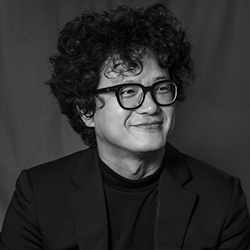
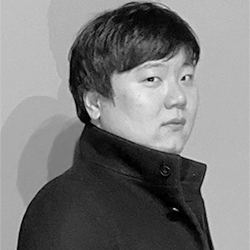
At Slitscope, he works as the AI developer and project planner. Moving away from using AI as a creation, he recognizes AI as an artistic subject and engages in his work as a collaborator. His AI works deal with various subjects, such as photography (I Question series), human body motion (MADI), poetry (poiesis), and space (Ludenstopia), creating an artistic interface between humans and AI. He reexamines the relationship between the two and raises an ontological question about humans defined by reason and thinking.
“Interstellar message” refers to a message designed to inform aliens that there is also an intelligent civilization on Earth, assuming extraterrestrial civilization with radio communication exists.
The interstellar message could represent the Earth and humanity, but the reality is that many countries in the Association of Southeast Asian Nations (ASEAN), including Korea and the five Mekong countries, have been alienated from research attempts. However, to design an interstellar message that genuinely represents humanity, it is essential, more than anything else, to reflect the broader language, text, and cultural diversity that exist on Earth.
Interstellar Message written in 6 languages of the Earth applies Hangeul and Korean grammar to the existing interstellar message system and the five languages of the five Mekong countries (Cambodia, Laos, Myanmar, Thailand, and Vietnam) to convey the Earth’s natural language system to an extraterrestrial civilization.
The theme that this project ultimately wants to explore is “how do we communicate with beings different from us?” This ultimately leads to the questions, “What kind of beings are we?” and “How can we understand each other?” This effort to truly understand other people and cultures makes humans mature. Considering the numerous past tragedies that occurred because we misunderstood each other and modern human beings who still live with the potential to destroy themselves, it is clear what this project wants to convey to humanity. The interstellar message to the universe is actually an “echo of the universe” in itself directed to humans.
Credit
Water molecule, CK-12 Foundation
The Milky Way Galaxy, NASA/JPL-Caltech/R. Hurt (SSC/Caltech)
The Earth seen from Apollo 17, NASA/Apollo 17 crew
Eukaryotes and some examples of their diversity, Compilation by Vojtechch Dost?l (Wikipedia)All other images used in the works have been released into the public domain.
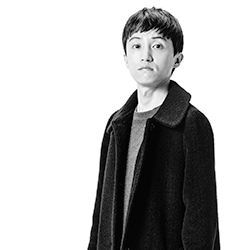
From Music of Memories (ACC, 2017), an audiovisual work that mediates human language and computer language; i Remember (ARKO, 2018), an audiovisual work that questions the identity of AI with a learned human memory; Learning About Humanity (ACC, 2019), a performance of cooking new food recipes created by AI; A Synthetic Song Beyond the Sea (Art Center Nabi, 2019), AI music that combines the sound of whales and human music; and A Letter Across the Stars (ACC, 2019) another audiovisual work that visualizes radio signal observation data to explore extraterrestrial intelligent life; to Interstellar Message Written in Hangeul (Hyundai Motors ZER01NE, 2020), his works connect language and music, memory and data, and humans and the universe. @unhappycircuit
This work includes performances and installations focusing on the aesthetic imagination of bizarre situations created through time, sealed in ice glaciers in unknown places, and melting and disappearing from sea level against time in the real world. The installations showcase the moon, planet, and stars meeting each other, depicting biological icons coexisting with humans, and moss habitats that can survive in harsh and extreme environments as modern entities far more advanced than multicellular bacteria. In particular, the artist creates sound with a glass bottle containing a mixture of microscopic elements, such as fine dust, wind, and geometric figures. This animal bone performance made with ceramics becomes an unknown sensory space full of change and creation, collecting the meanings of the outside world to add resonance and sound fluctuation. The work tells us the story of expanding experiences, a multidimensional story that depicts living in a larger world rather than being confined to a specific experience as if existing in multiple worlds instead of just one.
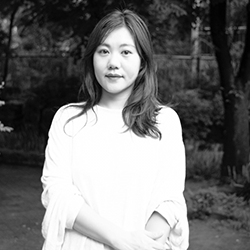
Lee Su-jin, who works and lives in Seoul, majored in painting and cinema. As an artist, he focuses on values that are continuously alienated and disappear after urbanization and industrialization. He has been working on various sensory experiments wherein microscopic imaginations for new transformations and value transmission can be achieved through audience-participatory performances, space installations, video works, and more.
The artist was born and raised in downtown Seoul during the economic growth period in the early 1980s. He has focused on artificial realms completely separated from nature, with a special interest in the characteristics of various “confrontations and discriminations,” “conflicts and collisions,” “destructions and renewals,” and “migrations and settlements” that appear in the industrialization process. As such, he discovers the multilayered phenomena occurring in various ways as time affects heterogeneous spaces and places and attempts to convert the “confrontation and conflict” state that continuously appears in the transition from an industrial society into a “reconciliation and healing” state. He also tries to transform “individual and group memory and narratives,” “science fiction (SF) imagination to transcend the present,” and “primitive vitality to revive (or rehabilitate)” into a state where infinite possibilities are compatible by superimposing them on a specific situation.
Private Exhibitions
- 2018Temporariness, Relation and Art of Structure, Soma Art Space, Berlin, Germany
Group Exhibition / Performance / Project / Screening
- 2021Ourler, Platform-L Contemporary Art Center, Seoul
- 2021( )In its Own Resonance, space imsi, Incheon
- 2021How to make a Song with Opposite Value?, Seoul Citizens’ Hall Wall Media, Seoul
- 2021Ground X, Seoul Museum of Art (SeMA) Warehouse, Seoul
- 2021Over the drawing, Sookmyung Women’s University, Moonshin Museum, Seoul
- 2021The Edge of the River (online project: http://360cinema.co.kr/gcf_3dvr/), ReflectSpace Gallery, Glendale National Library, Glendale, CA, USA
Machine Learning closely examines how a machine works and creates movement by substituting it into human joints. Because machines move differently from the way we move, we have to learn how to move again. The process of turning the machine motion into data, making a pattern, and then putting it on the human body, will create a hybrid, heterogeneous, and dialectical movement that resembles neither machine nor human movement. In this way, we will be able to think about how to establish a relationship between technological civilization and humans using “what is between machines and humans” rather than the confrontational structure between machines and humans.
The street and contemporary dancer Seo Il-young and the contemporary dancer Jeong Ji-hye deconstructed the robot’s movements together and programmed the body with a wide spectrum of gestures used in existing street robot dance (Poppin) and modern dance. The movements came from a robot arm working in a production plant and a robot dance (Do You Love Me?) released by Boston Dynamics in December 2020. When humans find a certain rhythm and regularity in their movement, they feel as if they are dancing. This also happens in the programmed movements of robotic arms. Does dance uniquely exist in the realm of human beings and take place only in the realm of art? Or can it also be found in the nonhuman and nonartistic realm? With this question in mind, the “Machine Learning” project attempts to examine the process of nonartistic work (labor: a robot arm working in a production factory) transforming into the artistic realm of dance and what is generated in nonhuman movements.
After pondering the questions, the two dancers create a recognition, interpretation and repetition, difference and inversion, and disconnection of the movements between machines and humans. AI Sophia says, “Just as the moon without light shines by reflecting the light of the sun,” it is possible to learn human emotions and express them by converting them into her own emotions. Humans can also ask the question “What are humans?” by seeing themselves in machine robots. Through this, humans can stop deciding to be humans or machines and find the colorful possibilities that arise the moment it becomes impossible to define them.
- Planning, editing, and typesetting: Jeon Bo-gyung
- Actresses: Jeong Ji-hye (choreography and performance), Seo Il-young (performance)
- Shooting: Choi Yoon-seok, Lee Ju-cheol
- Sound: Park Geun-ryeong
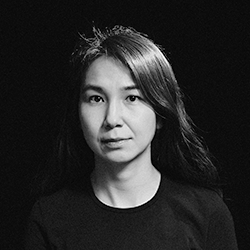
Jeon Bo-gyung refuses to establish a dichotomic boundary between art and nonart and attempts to redefine art by switching between the visuals of the body and memory of “nonartists” using various media, such as photography, installation, video, etc. The moment that another person’s world is materialized through the physical “body,” his or her story begins to ignite, breaking the long void of silence. Through this, the artist is “rewriting” the relationships between art and labor and aesthetics and nonaesthetics. In addition to her personal activities, the artist is also the founder and a member of the ETC and Z-After Visual Arts Collective.
Private Exhibitions
- 2021I Swear, I Am Not a Robot, Alternative Space LOOP (ALT SPACE LOOP), Seoul
- 2020Sonnet Not Written Yet, Soorim Art Center, Seoul
Group Exhibitions
- 2021Video Art and Experimental Film Event (VAEFE), SEA Foundation, Tilburg, Netherlands
- 2021The 21st Seoul International ALT Cinema & Media Festival (NEMAF 2021), Seoul Art Space Seogyo, Seoul
- 2021Where the sun goes at night, Lee Ungno Museum, Daejeon
- 2021ALT Cinema Neighborhood Store Gallery Season 2, neighborhood store space near Myongji University, Seoul
- 2021Conditions of Art, Tri-bowl, Incheon
The media art series Requiem aeternam dona eis: Everything will be OK is a video production project commemorating Asia and Myanmar’s painful history.
Kyal Sin symbolizing Myanmar’s democracy movement; Everything will be OK; the golden peacock; three-finger salute; a rice ball and fountain symbolizing the 5.18 Democratization Movement in Gwangju; a young child holding a portrait of his dead father; the red camellia symbolizing the Jeju 4.3 incident; the yellow umbrella symbolizing the Hong Kong democracy movement; yellow ribbons and candles commemorating the Sewol Ferry; and a tank man in Tiananmen Square, China
We created illustrations symbolizing the government’s abuse of its authority and its victims from various parts of Asia.Like a beautiful pool of light that gathers and scatters, we want to remember the victims of the Asian democratization movement and daily abuse of governmental authority and remind the citizens and audience so that history does not repeat itself.
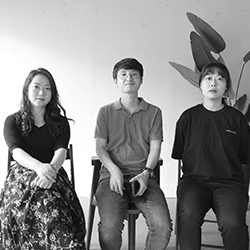
This team is made up of three people: movie director Yoo Myung-sang, music director Park Seo-young, and producer Kim Sin-hye.
A house absorbs and expresses time as corrosion. The space of corrosion created in this way is the sum of the things that have fallen off and the things that have been sent away. Looking at the empty space of corrosion is the act of recalling things that were once there.
The house mirrors the residents and expresses the residents as corrosion. The residents’ movements accumulate and leave traces, and the next family members follow over the traces left behind. The corrosion is placed on other corrosion, trace is overlapped and inherited, and the house’s history is imprinted through corrosion.
*3D scan archiving areas
- Ami-dong Biseok Village, Gamman-dong, Bumin-dong, Daeyeon-dong and redevelopment areas in Busan
*Sequence of production

- Survey on redevelopment areas in Busan
- Redevelopment areas 3D scanning
- Corroded pieces made from filling empty spaces that were corroded or had fallen off with clay
- Corrosion fragments 3D scanning
- Creation of motion graphics using 3D scans of the redevelopment area and corroded pieces
- Emphasis of the texture of 3D-scanned objects by accelerating the flow of time in motion graphics to speed up the rising and setting of the sun and express a village that is corroding in the accelerated time
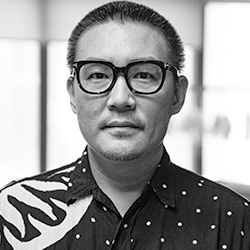
Film& Video
- 2021Choryang Bit, Video Art, Busan Dong-gu Public Art Project Art Park, directing/video
- 2020Memory medley, community art, video art, Hanseong 1918, production/video
- 2020“Hybridity_made in Busan,” video art, Tongui Boan Inn Group Exhibition
- 2020“Hybridity, made in Busan,” video art, Tongui Boan Inn Group Exhibition
- 2020Evacuation 2020, documentary, KNN Broadcasting Station, collaboration artist
- 2019 Trace, single channel video art, Seoul Video Art Festival, directing/video
- 2019Room, single channel video art, Seoul Video Art Festival, directing/video
- 20191 Minute, Media Art Group “Rear Window” Group Exhibition
- 2019Island_Island, Multi Media Performance, exciting art journey special performance, codirecting/video
- 2019Dotline., video art, directing/video
01/


